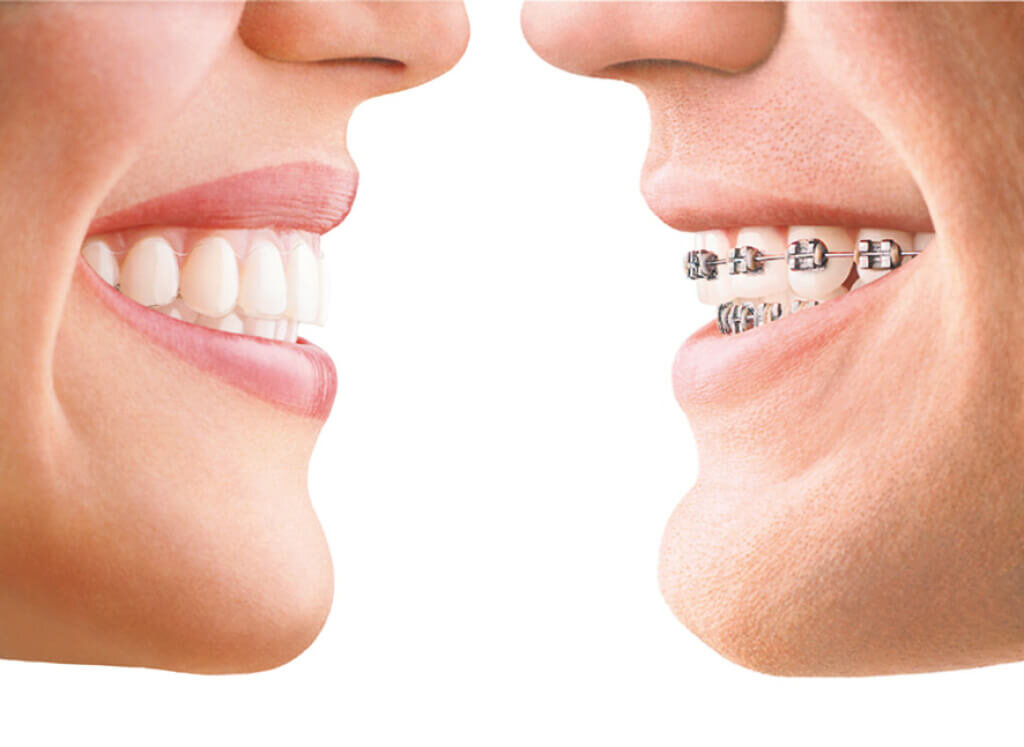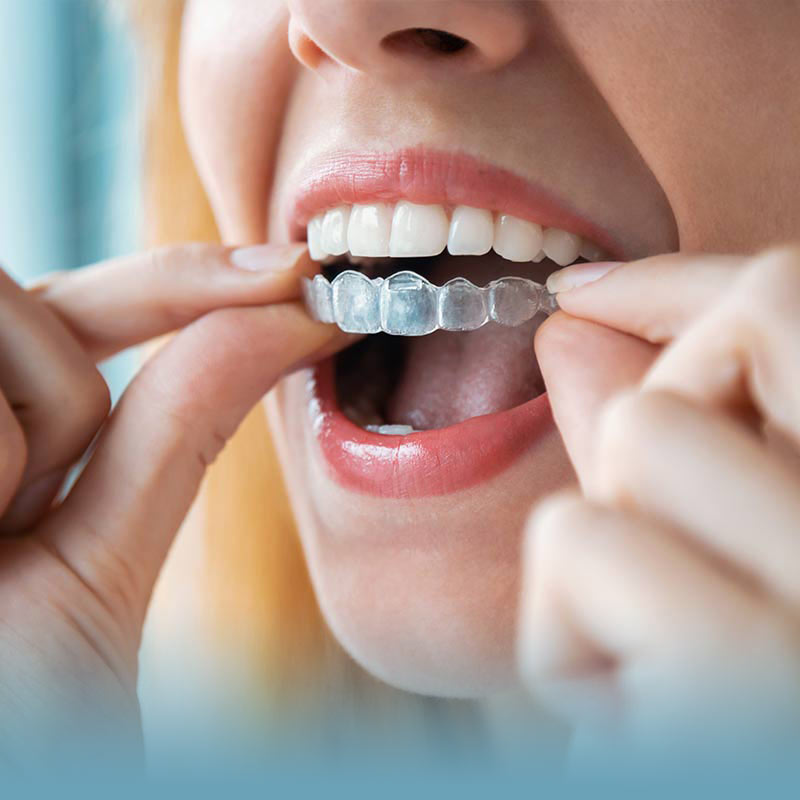What to Expect Throughout Your Invisalign Journey: A Comprehensive Overview
What to Expect Throughout Your Invisalign Journey: A Comprehensive Overview
Blog Article
Invisalign vs. Conventional Braces: Which Alternative Is Right for You?
When considering orthodontic therapy, the option between Invisalign and typical dental braces provides a number of important variables that merit mindful analysis. Invisalign supplies a very discreet choice with removable aligners, while typical braces provide a much more visible yet efficient remedy for extreme misalignment. Each alternative encompasses distinctive advantages and downsides associated with appearances, comfort, therapy duration, and cost. Understanding these subtleties is essential for making an educated choice that straightens with your individual choices and way of life. The concern continues to be: which choice will finest fulfill your orthodontic needs and assumptions?
Review of Therapy Alternatives

On the other hand, typical dental braces contain steel brackets and cables that are adhered to the teeth. This method uses continuous pressure gradually to achieve alignment. While reliable for complicated orthodontic problems, traditional braces require normal check outs for modifications and can posture challenges in maintaining dental health because of the difficulty of cleaning up about braces and cables.
Both choices have their benefits, and the choice typically rests on specific oral problems, way of life choices, and individual conformity. Inevitably, seeking advice from an orthodontic professional is vital for identifying the most suitable therapy strategy tailored to specific requirements. Comprehending the subtleties of each choice can substantially influence the total success of orthodontic therapy.
Visual Factors To Consider
A significant factor influencing the selection in between Invisalign and typical braces is the aesthetic allure each therapy uses. Invisalign aligners are crafted from clear plastic, making them virtually unseen when worn. This very discreet look is particularly attracting teens and grownups that may feel uneasy regarding their orthodontic treatment. The capacity to preserve an all-natural smile throughout the positioning process can dramatically boost the client's confidence in social and professional settings.
On the other hand, typical braces contain steel brackets and cables, which can be extra obvious. While improvements in orthodontic innovation have caused the development of smaller braces and tinted elastics, traditional dental braces still keep a more noticeable account. For some individuals, the exposure of braces might deter them from seeking needed therapy.
Ultimately, the choice between Invisalign and typical dental braces may pivot on individual preferences pertaining to appearances. Individuals that focus on discretion often lean toward Invisalign, while those that are much less worried concerning visibility may select conventional braces. Comprehending the visual effects of each alternative is vital for making an informed decision that aligns with one's lifestyle and preferences.
Comfort and Convenience

In terms of ease, Invisalign aligners are removable, enabling clients to enjoy their preferred foods without constraint and keep optimum dental health. Cleaning and flossing are streamlined, as the aligners can be taken out throughout these regimens, whereas typical dental braces call for mindful steering around braces and cables.
In contrast, conventional braces necessitate normal changes, making them less hassle-free for those with hectic timetables. Generally, the comfort and ease of Invisalign make it an attractive choice for lots of individuals looking for orthodontic treatment.
Therapy Duration and Efficiency
While both Invisalign and conventional dental braces are efficient in remedying dental misalignments, the period of treatment can differ substantially in between the two choices. Generally, Invisalign treatment can take anywhere from 12 to 18 months, depending upon the complexity of the case. The clear aligners function by slowly changing teeth into their preferred placements, and regular follow-ups with an orthodontist aid ensure progression stays on track.
On the other hand, standard dental braces commonly call for you can find out more a longer dedication, usually ranging from 18 months to 3 years. This is due to their set nature and making use of cables and braces, which can be extra effective for complex situations and serious imbalances (Invisalign). The therapy efficiency of traditional braces is well-documented, as they enable specific adjustments and greater control over tooth motion
Eventually, the option between Invisalign and standard dental braces may depend upon both the awaited therapy period and the certain oral problems available. Consulting with an orthodontist is critical, as they can provide customized referrals based look here on specific demands, ensuring the chosen approach straightens with preferred results and timeframes.
Price Contrast and Insurance Coverage Options
Expense plays a substantial duty in the decision-making procedure for individuals considering orthodontic therapy, whether deciding for Invisalign or standard dental braces. On standard, the cost of Invisalign arrays from $3,000 to $8,000, while standard braces generally set you back in between $2,000 and $6,000. Aspects influencing these costs consist of the complexity of the instance, the duration of therapy, and geographical area.
Several dental insurance plans provide partial insurance coverage for orthodontic therapies, yet the specifics can differ extensively. Normally, traditional dental braces might be a lot more frequently covered by insurance coverage plans compared to Invisalign, which some insurance companies classify as a cosmetic procedure.
Additionally, a number of orthodontic techniques supply versatile settlement strategies, making both therapy options much more obtainable. People should ask about potential financing choices and discount rates for upfront repayments. Examining the overall expense, including insurance coverage advantages and repayment strategies, is necessary for making an educated decision that aligns with both visual choices and spending plan factors to consider.

Conclusion
In recap, the choice in between Invisalign and standard braces pivots on several aspects, including visual preferences, convenience, treatment duration, and price. Invisalign uses a discreet, detachable choice that assists in oral health and dietary adaptability, while standard dental braces may be preferable for complex dental issues and usually come at a reduced price point. Inevitably, assessment with an orthodontist is important to evaluate individual scenarios and determine the most proper therapy option for accomplishing optimum oral alignment.
When thinking about click here for info orthodontic therapy, the selection between Invisalign and conventional dental braces offers a number of vital factors that merit cautious examination.Contrasting Invisalign and traditional braces reveals distinctive therapy alternatives for orthodontic correction.While both Invisalign and conventional braces are efficient in remedying dental misalignments, the period of treatment can vary dramatically in between the 2 alternatives.Cost plays a considerable function in the decision-making process for individuals taking into consideration orthodontic treatment, whether opting for Invisalign or conventional braces.In summary, the choice between Invisalign and traditional braces pivots on numerous variables, consisting of aesthetic preferences, comfort, treatment period, and expense.
Report this page